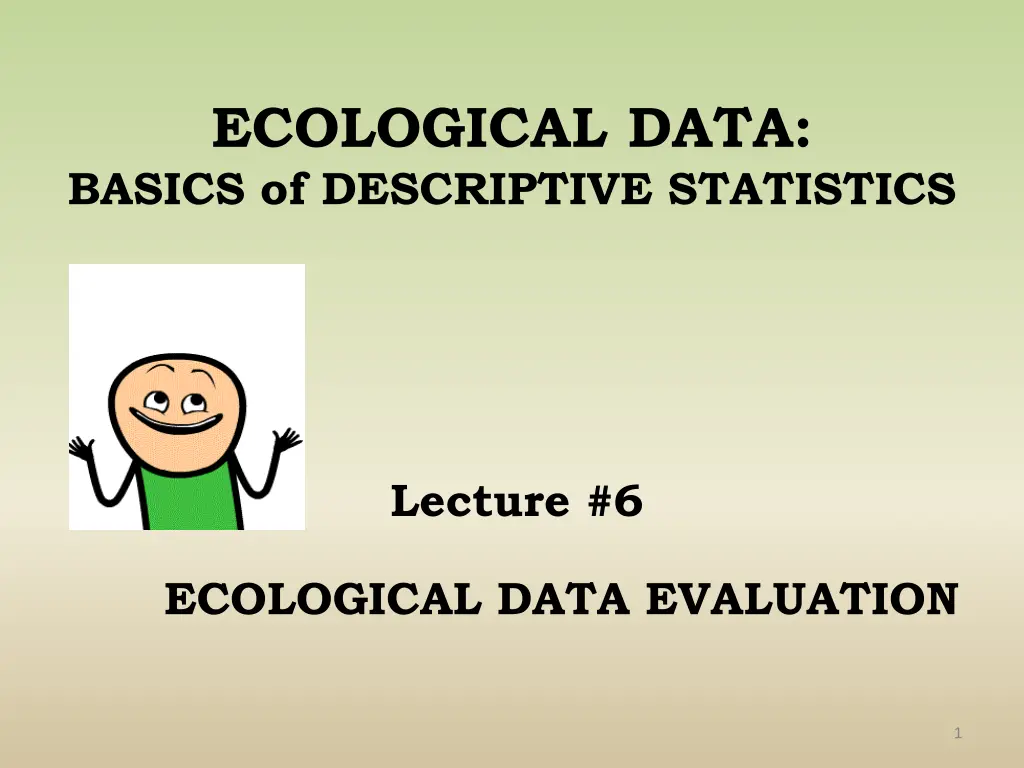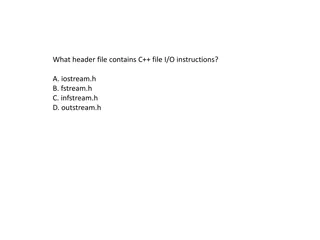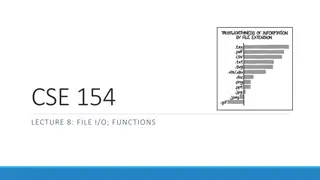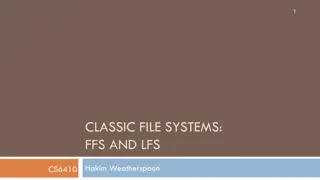
Exploring Descriptive Statistics in Ecology Studies
Discover the fundamentals of descriptive statistics in ecology, focusing on organizing, summarizing, and describing ecological data. Learn the significance of sampling, testing hypotheses, and making conclusions in ecological assessments. Explore variables, measures of central tendency, dispersion, and the application of linear models in ecological research.
Download Presentation

Please find below an Image/Link to download the presentation.
The content on the website is provided AS IS for your information and personal use only. It may not be sold, licensed, or shared on other websites without obtaining consent from the author. If you encounter any issues during the download, it is possible that the publisher has removed the file from their server.
You are allowed to download the files provided on this website for personal or commercial use, subject to the condition that they are used lawfully. All files are the property of their respective owners.
The content on the website is provided AS IS for your information and personal use only. It may not be sold, licensed, or shared on other websites without obtaining consent from the author.
E N D
Presentation Transcript
ECOLOGICAL DATA: BASICS of DESCRIPTIVE STATISTICS Lecture #6 ECOLOGICAL DATA EVALUATION 1
OUTLINE 1. Ecological data 2. Samples and populations 3. Types of data 4. Variables 5. Measures of Central Tendency 6. Measures of Dispersion 7. Linear model 2
Descriptive Statistics in Ecology - organizing, summarizing & describing data - sampling is important for ecological studies - testing ecological hypotheses - state your objective clearly - make conclusion (on air quality, pollutant s toxicity, population changes, etc.) - ecological assessment helps make decisions in industrial, political, economic areas 3
2 species (total) species in each habitat 7
3 8
4 9
5 10
6 11
Ecological Data types of variables Independent vs Dependent We are interested in relating independent variables to dependent ones Independent variableis the variablethat is changed or controlled in a scientific experiment to test the effects on the dependent variable: X or input variable, or argument Dependent variableis 'dependent' on the independent variable: Y , response , output variable Y = f (X) 12
Measures of Central Tendency describe the center of data Mean Arithmetic Average Median Middle Score Mode Most Frequently Occurring Score 13
Measures of Central Tendency Mean = 17.9 $ Daily Salary: 10$ 11$ 11$ 15$ 15$ 15$ 19$ 20$ 21$ 21$ 22$ 22$ 24$ 25$ X= X n 251 X=(10+11+11+15+15+15+19+20+21+21+22+22+24+25) 14 14
Measures of Central Tendency Median = 19 $/day Daily Salary: 10$ 11$ 11$ 15$ 15$ 15$ 19$ 20$ 21$ 21$ 22$ 22$ 24$ Median is the "middle" value in the list of numbers arranged in order from least to greatest. If there is an odd number of items in data set, the median is the middle number. 15
Measures of Central Tendency Median = 19.5 $/day Daily Salary: 10$ 11$ 11$ 15$ 15$ 15$ 19$ 20$ 21$ 21$ 22$ 22$ 24$ 25$ If there is an even number of items in data set, then the median is the average of two middle numbers. (19 + 20) 2 = 19.5 16
Measures of Central Tendency Mode = 15 $/day Daily Salary: 10$ 11$ 11$ 15$ 15$ 15$ 19$ 20$ 21$ 21$ 22$ 22$ 24$ 25$ Mode is the value that occurs the most Quick and easy to compute! 17
Measures of Dispersion Describe distribution of data Range- difference between the highest and lowest values Variance shows how data are spread out: Standard deviation measure of spread about the mean for population for sample 18
Standard Error Standard error of a mean describes how good the estimate is. s SE of a mean = n The bigger sample size n, the lower SE The more spread data make higher SE Confidence Interval - 95% of all sample means are in it: 22
Normal Distribution Curve Symmetrical about the mean, Bell-shaped curve Mean = Median = Mode 50% of the values less than the mean and 50% greater than the mean 23
Examples of Normal Distribution pH of water in lakes Amount of nutrient in soil Temperature (on certain day over # yrs) Blood Pressure Test Scores Lifetimes of light bulbs 24
DONT BE MEAN BE ABOVE AVERAGE 27






















